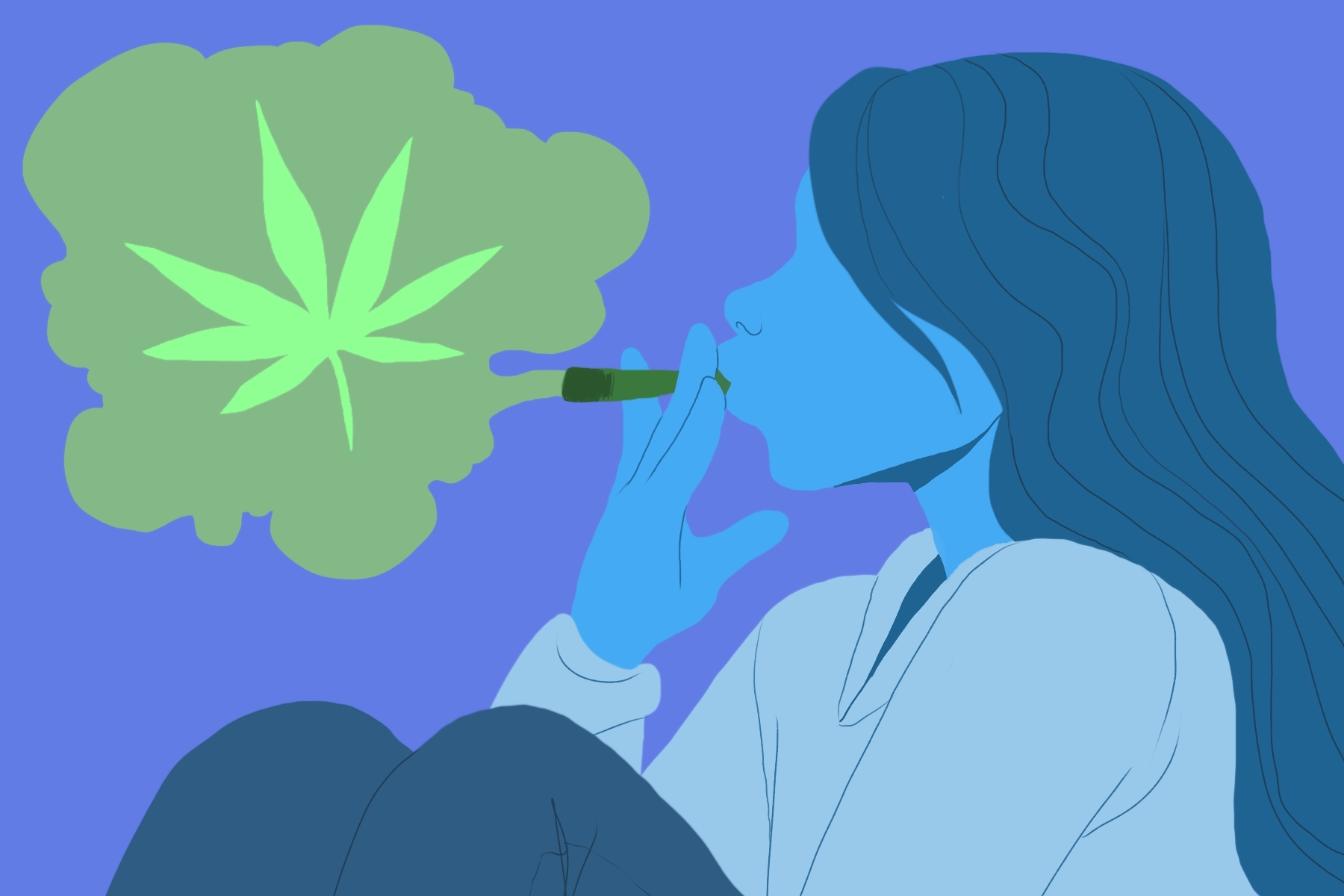Many teenagers believe that cannabis is a safe and relatively harmless substance. Nevertheless, recent evidence indicates that marijuana is not nearly as benign as many teenagers assume. Despite its reputation among today’s adolescents, marijuana use during one’s teenage years may potentially lead to devastating mental health outcomes.
In 2019, roughly 37% of high schoolers in the United States reported having used marijuana at least once in their lifetime, and 22% reported having used it in the last month. Given the widespread usage of marijuana among teenagers, its impact on adolescents’ mental health is highly relevant.
In recent years, several research studies have found a significant correlation between regular cannabis use and the onset of psychosis, a phenomenon in which individuals lose touch with reality and may experience visual or auditory hallucinations. This correlation is even more prominent for adolescents who use cannabis on a regular basis, start using it at an early age and/or use it for prolonged periods of time. Furthermore, the use of cannabis may be more likely to trigger psychotic symptoms in teenagers who are genetically predisposed to developing a psychotic disorder, such as schizophrenia.
One recent study revealed that as many as two in five teenagers who use marijuana experience unwanted mental side effects, such as extreme paranoia, anxiety or hallucinations. Adolescents who experience adverse symptoms from cannabis use — especially hallucinations, or any other distorted perceptions of reality — are likely prone to psychosis, and are best off avoiding cannabis altogether. The same goes for individuals who already have a psychotic disorder, as cannabis use during adolescence could severely exacerbate existing psychotic symptoms.
Compared to a few decades ago, cannabis products today contain a concerningly high amount of THC, the primary psychoactive ingredient in cannabis. More and more products are being made with increased THC content, as it is often thought to produce a more intense high. As a result, in recent years, cannabis products such as dabs, edibles, shatter and oil have significantly risen in popularity among teenagers.
Interestingly, the frequent use of high-potency marijuana — which contains unusually high amounts of THC — poses the most significant risk for the onset of detrimental mental health consequences. In fact, daily use of high-potency cannabis may increase the risk of psychosis by nearly fivefold.
Moreover, the prevalence of high-potency marijuana may also increase adolescents’ risk of developing a severe cannabis dependency. Generally, the more potent a marijuana product, the greater the chance of continued use, dependency and addiction. Since various high-potency cannabis products are widely available, many teenagers who use marijuana are exposed to very high THC contents and are therefore at risk of developing a dependency. In fact, individuals who have used marijuana before age 18 are four to seven times more likely than adults to develop a cannabis use disorder.
Whether the relationship between marijuana and psychosis is causal remains unclear. While it is likely that greater exposure to high-potency cannabis increases the risk of psychosis and psychotic disorders, it is also possible that teenagers who experience psychotic symptoms may seek out marijuana as a “self-medication” strategy to relieve mental distress.
It is important to note that only a small fraction of adolescent marijuana users experience psychotic symptoms, and an even smaller fraction develop permanent psychotic disorders. Nevertheless, there is evidence that some teenagers are severely vulnerable to cannabis use, and the consequences can be clearly devastating.
Although the evidence linking cannabis use and psychosis in some capacity is strong, teenagers continue to perceive the drug as harmless. From just 2015 to 2019, the percentage of adolescents who perceived a risk in weekly marijuana usage decreased from 40.6% to 34.5%. Despite evidence indicating its harm, today’s adolescents are seemingly unaware of — or at least unwilling to admit — the drug’s potential dangers for mental health.
The recent widespread legalization of cannabis has likely contributed to its more benign reputation among youth. As more and more states have moved to legalize marijuana in both medical and recreational capacities, teenagers’ inaccurate perceptions of the drug have been reinforced. This phenomenon has resulted in increased marijuana usage across the nation, and particularly among adolescents and young adults, who are generally less aware of the drug’s complexity.
In many cases, marijuana is not only seen as harmless, but as beneficial to mental and physical health. Marijuana is often acknowledged as a mechanism to alleviate chronic pain and address anxiety, PTSD and depression. In the dialogue surrounding the legalization of marijuana, people highlight and oftentimes exaggerate these potential benefits. While there is certainly evidence of the benefits of marijuana, the media’s emphasis on the medical advantages of cannabis has likely distorted adolescents’ perception of the drug.
Furthermore, the widespread legalization of marijuana has reduced barriers to accessing cannabis products, especially in states where the drug is available recreationally. The increased prevalence of cannabis dispensaries and delivery services has enabled many teenagers to circumvent legal restrictions and obtain marijuana with little difficulty.
Overall, evidence regarding the effects of cannabis — whether positive or negative — is limited. Since marijuana has been an illicit substance in the United States for so long, it has been extremely difficult for researchers to study its impact on mental health. While the legalization of marijuana in many states has allowed for more research opportunities, it remains nearly impossible to study cannabis use in individuals under the age of 21. As a result, very little is known about the connection between psychosis and cannabis use in adolescence. However, the lack of a concrete causal relationship should not be interpreted as a lack of a connection altogether; it is very likely that cannabis use during teenage years is even more dangerous than current data reveals.
While the exact relationship between adolescent marijuana usage and psychosis is not entirely known, one clearly exists. For the safety of children and adolescents throughout the United States, it is essential that the connection between cannabis and mental health is universally acknowledged and studied in more detail. Moreover, adolescents must not only comprehend the potential benefits of cannabis, but the potential harms as well. As legalization efforts continue full steam ahead, teenagers must understand the complexities of the drug and have the resources and education necessary to make informed decisions regarding its use.
















